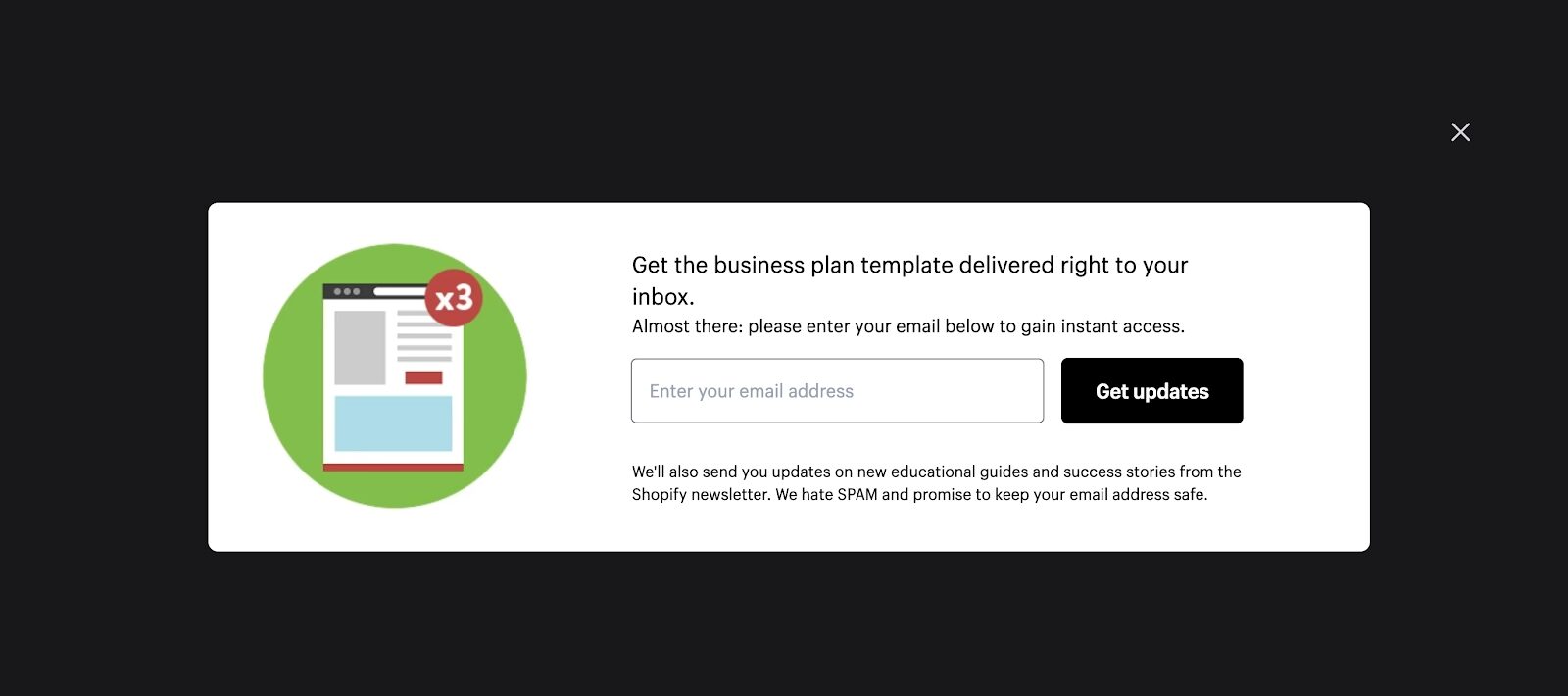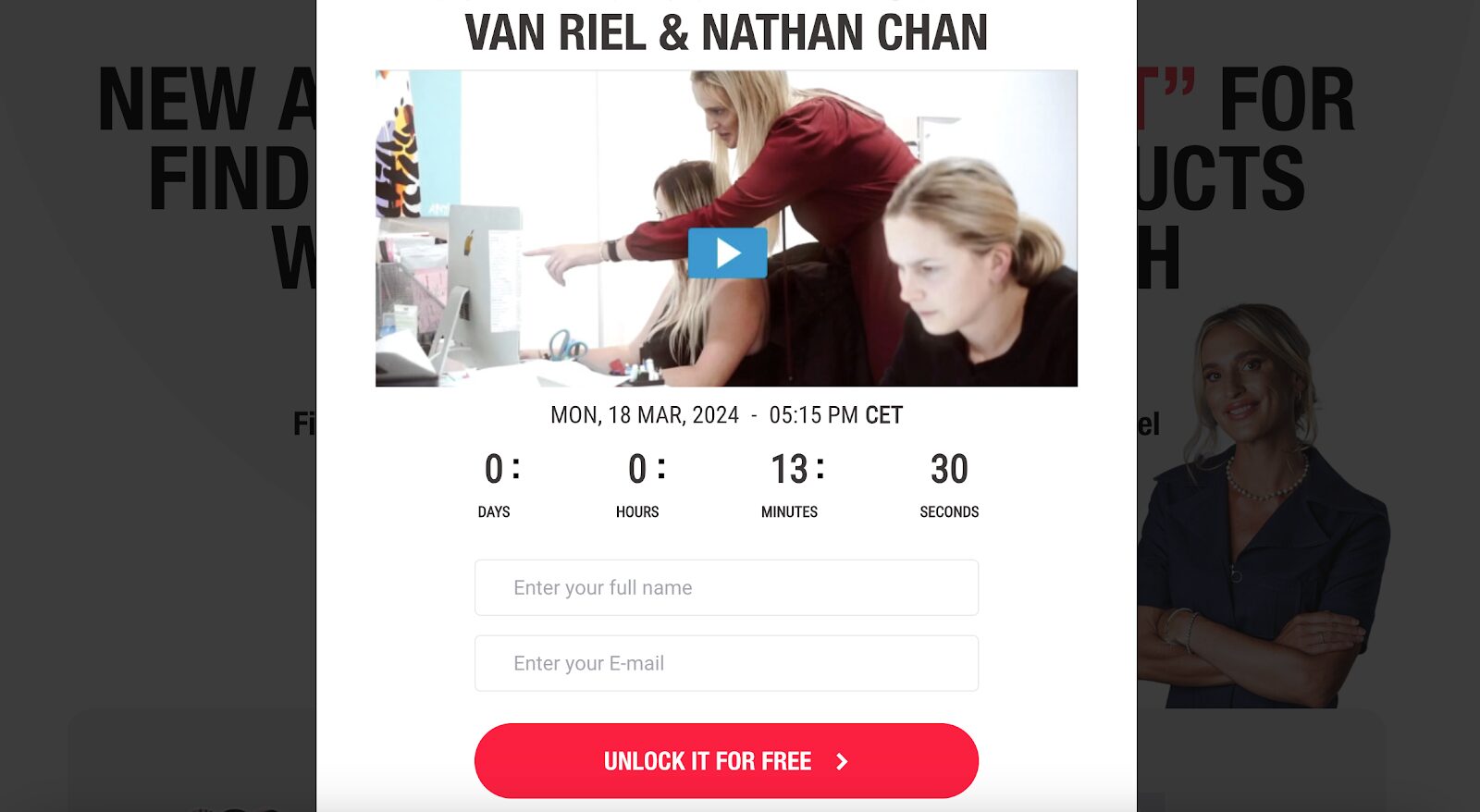- Blog
- What is Gated Content? Definition & 9 Gated Content Examples
What is Gated Content? Definition & 9 Gated Content Examples
-
Barbara Bartucz
- Conversion
- 6 min read
Table of Contents
Imagine yourself at the entrance to a vault filled with valuable treasures—exclusive resources, insights, and more—all waiting to be discovered.
To get inside, you simply need to provide a token: your contact details.
In this article, we’ll dive deep into what gated content is, why you should use it, and look at 9 examples of effective types you can incorporate into your strategies.
Ready? Let’s go!
What is gated content?
Gated content is any valuable piece of digital content, like eBooks, whitepapers, webinars, or case studies, hidden behind a virtual “gate.”
This gate is typically a lead capture form, which asks users to submit their contact information (usually an email address) before gaining access.
It’s like a trade-off: consumers get the good stuff, and businesses get a way to reach them.
Why should you use gated content?
Gated content serves as a powerful tool for lead generation and nurturing.
By creating gated content and offering it in exchange for contact information, you can build your email lists and have personal, meaningful conversations with your website visitors.
Plus, gated content allows you to gather valuable data about your audience. With that info, you can tailor your marketing to suit them perfectly and create more targeted, personalized campaigns.
Comparing gated and ungated content
Now, let’s compare gated and ungated content.
As discussed, gated content offers valuable content but asks for contact details in exchange. Ungated content, on the other hand, grants instant access to everyone without requiring any information in return.
Here’s a more detailed breakdown:

As you can see, ungated content helps to increase brand awareness, improve SEO results, and generate organic traffic, while gated content is highly effective for capturing leads and building an email list.
9 gated content examples to generate leads
Now that we’ve got a good grasp of what gated content is all about, let’s explore nine examples of different types of gated content and how others use it.
1. Ebooks
First, let’s start with ebooks.
These are valuable tools in a gated content strategy as they allow you to share in-depth knowledge on specific topics, addressing industry challenges or trends comprehensively.
Take a look at how DigitalMarketer offers its ebook with the value proposition of becoming a better copywriter.

On the landing page, visitors can opt in by providing their name and email address and then clicking on the call-to-action (CTA) button, which aligns with the headline.

If you want to create gated content, an ebook can be a wise choice.
It showcases your expertise, positions your brand as a thought leader, and boosts brand awareness. It’s a highly valuable resource for your audience, fostering trust and credibility in your brand.
2. Whitepapers
In-depth reports or studies also make great gated content, which can help generate leads.
Creating whitepapers allows you to present data-driven insights, thorough analyses, and expert commentary on a particular topic for users who are still in the consideration stage.
It demonstrates your authority within your industry and helps to attract high-quality leads interested in deeper understanding and solutions.

3. Webinars
Next up, we have webinars. These are live or recorded presentations focused on specific topics, and they typically deliver an interactive learning experience for participants.
Hosting webinars allows you to engage with your target audience and have a conversation with them in real-time.
Webinars can build brand authority, foster personal connections, and establish your brand as a trusted source of information and expertise for potential customers.
Here’s an example from Demio promoting their webinar as gated content:

4. Case studies
Case studies showcase real-world examples of successful outcomes, demonstrating how your product or service has benefited previous clients.
If you create case studies as part of your marketing strategy, you’ll be able to provide compelling social proof of your offerings’ effectiveness, instill confidence in potential customers, and differentiate your brand from competitors.
Why are case studies so great at building trust? Because they highlight tangible results and success stories.

5. Templates and tools
Looking to lend a hand to your website visitors? Providing templates and tools is the way to go.
Crafting these resources enables you to tackle the particular pain points or challenges your audience encounters, presenting solutions that highlight your expertise and understanding of their needs.
Providing useful, well-designed templates and tools solidifies your brand as a valuable resource, fostering trust among potential customers.
Shopify’s business plan template is a great example of this gated content strategy:


6. Exclusive reports
If you’ve conducted research in your industry, why not create a gated report?
Creating exclusive reports allows you to offer high-quality content that’s not readily available elsewhere, positioning your brand as a thought leader and authority within your industry.
It can help to attract leads interested in staying informed and gaining a competitive edge.

7. Free trials or demos
Free trial? Count us in!
Offering free trials or demos allows you to showcase the value proposition of your offerings and reduce the barrier to entry for potential customers.
Take a look at Salesforce’s strong landing page, which is a great example of how to highlight the benefits of your gated content.
The user has to answer 9 questions on multiple pages, and then they gain access to the product for free.

8. Courses or workshops
In-depth resources like courses or workshops are a great way to show what you know.
When you create courses or workshops, you’re sharing your knowledge, giving practical training, and becoming a trusted mentor.
Online courses typically consist of pre-recorded videos, all of which are of high quality, curated, and presented as compelling content.
If you want to use courses as gated content, take a look at Foundr’s landing page for inspiration:

Also, note how they’re increasing the sense of urgency by including a countdown timer on their popup.

9. Interactive assessments
We all love to be entertained, and quizzes are entertaining.
Creating interactive assessments allows you to drive engagement, gather valuable insights, and tailor your marketing efforts to meet the specific needs of your audience.
You can even create several versions of a piece of gated content and then deliver them to segments of your audience based on their answers to the quiz.
Check out Neil Patel’s example below. Note how they highlight the high perceived value of their offer, which is a step-by-step 7-week action plan.


FAQ
Is gated content effective for all businesses?
Gated content can be effective for many businesses, but its success depends on factors like your target audience, industry, and the value of the content you offer. It’s essential to assess your specific goals and audience preferences before implementing gated content strategies.
How do I determine what content to gate?
To decide what content to gate, consider offering resources that provide significant value and address specific pain points or interests of your target audience. Look for content that’s comprehensive, exclusive, or offers actionable insights. Conducting market research and analyzing audience feedback can help you identify content that is worth gating.
What are the best practices for optimizing gated content forms?
When optimizing gated content forms, focus on keeping them simple and concise while collecting essential information. Use clear and compelling language to communicate the value of the content users will receive in exchange for their information. Additionally, consider implementing A/B testing to refine your form’s design and continually improve conversion rates.
How can I measure the success of my gated content campaigns?
To measure the success of gated content campaigns, track metrics such as conversion rates, lead quality, and engagement levels. Analyze how many users fill out your forms, how many convert into customers, and the level of engagement with the gated content itself. You can also use tools like Google Analytics or marketing automation platforms to gather detailed insights into campaign performance.
Wrapping up
We hope that you’ve gained some knowledge on gated content best practices!
Armed with these marketing strategies, you’re ready to implement effective gated content that drives engagement, captures leads, and ultimately propels your business forward.
Want to get started with gated content? Try promoting it on a popup to capture even more leads:
Migration has never been easier
We made switching a no-brainer with our free, white-glove onboarding service so you can get started in the blink of an eye.

What should you do next?
Thanks for reading till the end. Here are 4 ways we can help you grow your business:
Boost conversions with proven use cases
Explore our Use Case Library, filled with actionable personalization examples and step-by-step guides to unlock your website's full potential. Check out Use Case Library
Create a free OptiMonk account
Create a free OptiMonk account and easily get started with popups and conversion rate optimization. Get OptiMonk free
Get advice from a CRO expert
Schedule a personalized discovery call with one of our experts to explore how OptiMonk can help you grow your business. Book a demo
Join our weekly newsletter
Real CRO insights & marketing tips. No fluff. Straight to your inbox. Subscribe now
Barbara Bartucz
- Posted in
- Conversion
Partner with us
- © OptiMonk. All rights reserved!
- Terms of Use
- Privacy Policy
- Cookie Policy
Product updates: January Release 2025








